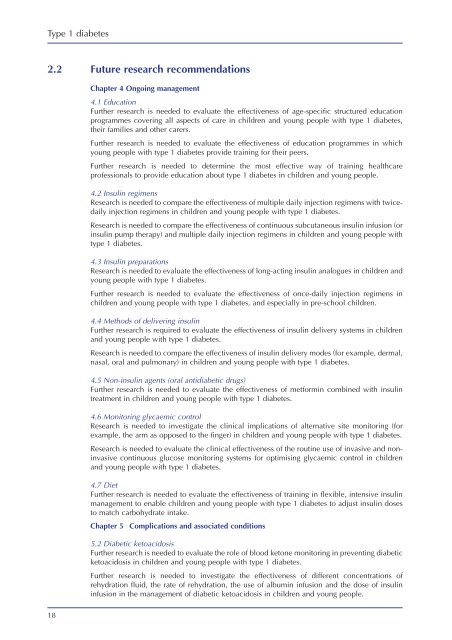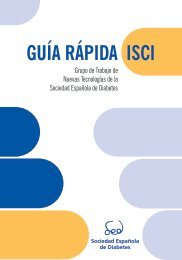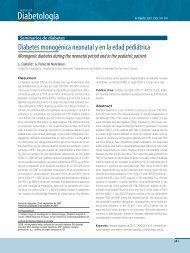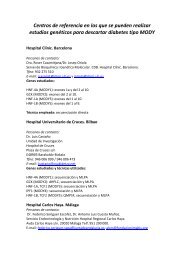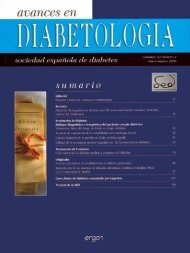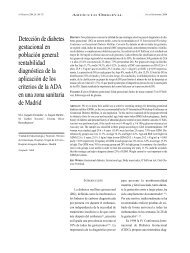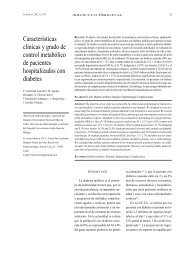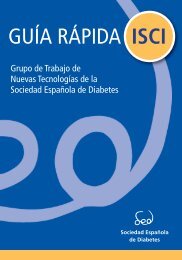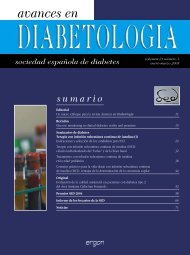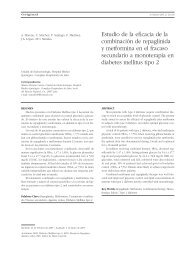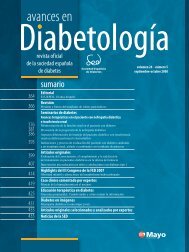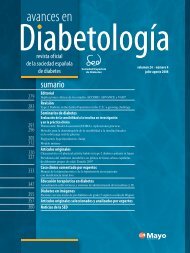You also want an ePaper? Increase the reach of your titles
YUMPU automatically turns print PDFs into web optimized ePapers that Google loves.
<strong>Type</strong> 1 <strong>diabetes</strong>2.2 Future research recommendations18Chapter 4 Ongoing management4.1 EducationFurther research is needed to evaluate the effectiveness of age-specific structured educationprogrammes covering all aspects of care in children and young people with type 1 <strong>diabetes</strong>,their families and other carers.Further research is needed to evaluate the effectiveness of education programmes in whichyoung people with type 1 <strong>diabetes</strong> provide training for their peers.Further research is needed to determine the most effective way of training healthcareprofessionals to provide education about type 1 <strong>diabetes</strong> in children and young people.4.2 Insulin regimensResearch is needed to compare the effectiveness of multiple daily injection regimens with twicedailyinjection regimens in children and young people with type 1 <strong>diabetes</strong>.Research is needed to compare the effectiveness of continuous subcutaneous insulin infusion (orinsulin pump therapy) and multiple daily injection regimens in children and young people withtype 1 <strong>diabetes</strong>.4.3 Insulin preparationsResearch is needed to evaluate the effectiveness of long-acting insulin analogues in children andyoung people with type 1 <strong>diabetes</strong>.Further research is needed to evaluate the effectiveness of once-daily injection regimens inchildren and young people with type 1 <strong>diabetes</strong>, and especially in pre-school children.4.4 Methods of delivering insulinFurther research is required to evaluate the effectiveness of insulin delivery systems in childrenand young people with type 1 <strong>diabetes</strong>.Research is needed to compare the effectiveness of insulin delivery modes (for example, dermal,nasal, oral and pulmonary) in children and young people with type 1 <strong>diabetes</strong>.4.5 Non-insulin agents (oral antidiabetic drugs)Further research is needed to evaluate the effectiveness of metformin combined with insulintreatment in children and young people with type 1 <strong>diabetes</strong>.4.6 Monitoring glycaemic controlResearch is needed to investigate the clinical implications of alternative site monitoring (forexample, the arm as opposed to the finger) in children and young people with type 1 <strong>diabetes</strong>.Research is needed to evaluate the clinical effectiveness of the routine use of invasive and noninvasivecontinuous glucose monitoring systems for optimising glycaemic control in childrenand young people with type 1 <strong>diabetes</strong>.4.7 DietFurther research is needed to evaluate the effectiveness of training in flexible, intensive insulinmanagement to enable children and young people with type 1 <strong>diabetes</strong> to adjust insulin dosesto match carbohydrate intake.Chapter 5 Complications and associated conditions5.2 Diabetic ketoacidosisFurther research is needed to evaluate the role of blood ketone monitoring in preventing diabeticketoacidosis in children and young people with type 1 <strong>diabetes</strong>.Further research is needed to investigate the effectiveness of different concentrations ofrehydration fluid, the rate of rehydration, the use of albumin infusion and the dose of insulininfusion in the management of diabetic ketoacidosis in children and young people.


